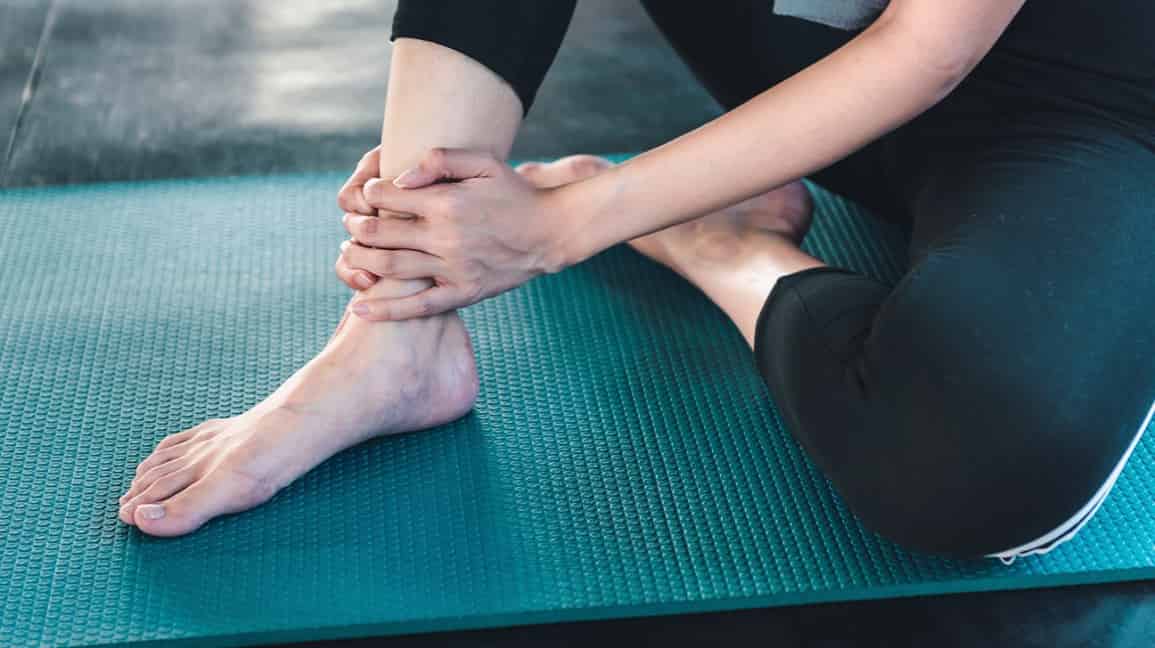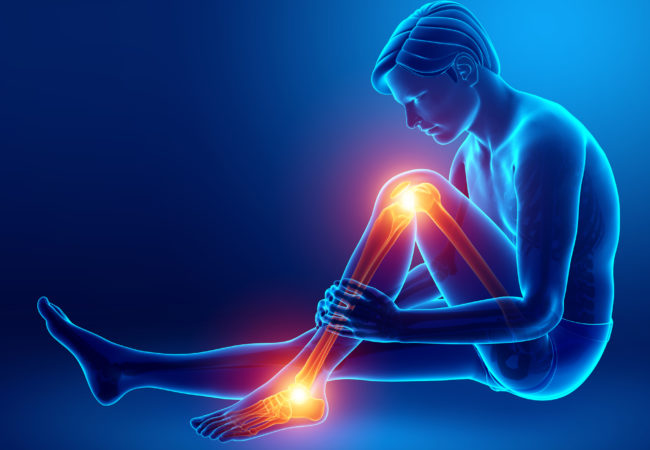WHAT IS LEG PAIN?
The lower part of our body takes the brunt in daily life. Leg pain is caused by wear and tear, overuse, or injuries in joints or bones or in muscles, ligaments, tendons or other soft tissues.
Leg pain ranges from a dull ache to a searing, throbbing, or burning sensation. Leg pain is a constant or intermittent pain. This occurs in the foot, ankle, knee, or any part of the leg. It affects the entire leg or a localized area, such as the shin or knee.
Leg pain occurs during the night. It occurs while lying down, or when running or working out, depending on the cause.
Leg pain is from tissue aggravation caused after a damage or illness. It may happen because of therapeutic conditions or no traumatic reasons.
Some leg pain is bearable, while others are severe. But, intense leg pain can affect your ability to walk or to bear weight.

WHAT CAUSES LEG PAIN?
Leg pain is classified as neurological, musculoskeletal or vascular.
- Neurological Pain – Restless leg syndrome is a neurological condition. The legs twitch uncontrollably. Other conditions causing leg pain are neuropathy, or nerve damage, and sciatic nerve pain. Neurological pain is present even while resting.
- Musculoskeletal Pain – This is characterized by popping or cracking sound in the knee, arthritis or an autoimmune disease affecting the joints in the hip, knee, or ankle. Other musculoskeletal pain is triggered in muscle, tendon, or ligament is strained during a fall or injury.
- Vascular Pain – This is caused due to deep vein thrombosis (DVT), cellulitis, infections, varicose veins, and varicose eczema accompanied by discoloration of the skin.
Many reasons cause mild or severe leg pain, and some of the most common reasons are:
Leg cramps, or Charley horses: These are transient episodes of pain. Episode might last for several minutes. The calf muscles at the back of lower leg tightness and spasm occurs. Older people are more prone to cramps. Cramps occur more at night. Also, cramps occur after going the same walking distances. The pain often eases when resting.
Common causes of cramps include:
Dehydration
Low amounts of potassium, sodium, calcium, or magnesium in the blood.
Medicine (such as diuretics and statins).
Muscle fatigue or strain
DVT (Deep Vein Thrombosis): This is a blood clot in the deep veins of the leg. It is caused by sitting or standing for a long time. Symptoms of DVT involve swelling and a hot painful sensation in the leg occurring while walking or standing up.
Fractures and stress fractures: Fractures due to heavy pressure such as from a fall. Some fractures are immediately visible, with severe bruising, swelling, and deformation. These cases need urgent medical attention. Stress fractures are small fractures. These result from repetitive stress during sports, during increase in intensity of activity. Fractures are small. But no single injury causes leg pain. The pain starts at an earlier stage mainly during exercise sessions, and stays at all the time.
Shin splints: Intense exertion during sports lead to different types of injury. Jogging and running cause repetitive impact forces as well as overload muscles and tendons. This produces severe, localized tenderness in the muscles. Sometimes bone pain felt around the shin bone.
Ovarian cancer: Ovarian cancer is a condition affecting the ovaries. Ovaries are present in the lower abdomen leading to pain and swelling in the legs.
Popliteus tendinitis: This is inflammation of the popliteus muscle. It stabilizes the tendon and it is located in the back of the knee. It helps in maintaining proper mechanics while walking, running, or climbing stairs. It results in knee pain during downhill running.
Hamstring strain: Acute trauma causes sprains and strains. A sprain occurs from stretching or tearing, whereas a strain is an injury in the muscles or tendons. Often associated with running, a hamstring strain leads to acute pain in the rear of the thigh muscle. It is usually due to a partial tear. Inadequate flexibility training, overstretching, or not warming up before an activity causes sprains and strains. Continuing to exercise while injured increases its risk.
Other conditions causing pain and swelling in the legs:
Abdominal diseases
Ovarian disorders
Back problems.
WHAT ARE THE SYMPTOMS OF LEG PAIN?
Pain is caused from response stimuli of nerves due to tissue like high levels of pressure, high or low temperatures, and chemicals. Leg pain is described as sharp, dull, numbing, tingling, burning, radiating, or aching. Some symptoms depending on the cause are:
- Weakness
- Numbness
- Throbbing
- Cramps
- Aching
- Tingling and burning sensation
- Claudication, or pain occurring in the legs when walking or exercising
- Sciatica Pain
It is important to see a doctor if:
- Swelling in both legs
- Varicose veins causing discomfort
- Pain while walking
- Leg pain worsening or persists beyond a few days

HOW IS LEG PAIN DIAGNOSED?
Leg pain is easily diagnosed, mainly pain due to overuse or minor injuries. The discomfort eases within a short time usually with home remedies. It is important to see a doctor if the leg pain is severe or interferes with your daily activities. The doctor will run various tests and ask about symptoms. They would perform a physical exam in order to determine the reason behind leg pain, such as:
- The location of the pain
- The intensity of the pain and whether it is getting worse
- When the pain started
- Pain changes when the person is doing a specific activity
- If there are any other symptoms that the person is experiencing along with leg pain
TREATMENT OF LEG PAIN?
The treatment of leg pain depends upon its diagnosis. The treatment is focused on the diagnosis involving pain control and underlying problems to prevent or lessen future occurrences. Some of these treatments are:
- Self-care at home: Home treatments help in minor leg pain. Depending on the intensity of the pain, the below steps help in alleviating the pain:
Resting as much as possible.
Elevating the leg.
Applying ice or heat pack to reduce swelling and pain
Gently stretching and massaging cramping muscles.
Taking over-the-counter pain medicines like acetaminophen or ibuprofen. - Antibiotics: If pain is due to infection doctors would prescribe antibiotics. It helps fight infections caused by bacteria that are causing the ache and to ease the pain.
- Physical therapy: This helps you to regain strength. It is important for movement in parts of your body after an injury. It can help you manage pain and prevent permanent damage and recurring problems.
- Surgery: Surgery is the last option if the home care does not provide relief. This solution will be effective and works best for the spine. A surgery helps to alleviate pain, weakness, tingling or numbness in any part of the leg from the rear end down to the feet.
OUTLOOK
Leg pain is a common problem. This can range from mild and annoying to severe and debilitating. Some conditions that cause leg pain may get better on their own or with lifestyle modifications, but it’s important to recognize conditions that need medical attention, including sudden injuries that require emergency treatment.
If you or anyone you know is suffering from leg pain, our expert providers at Specialty Care Clinics will take care of your health and help you recover.
Call us on (469) 545-9983 to book an telehealth appointment with our specialists.
